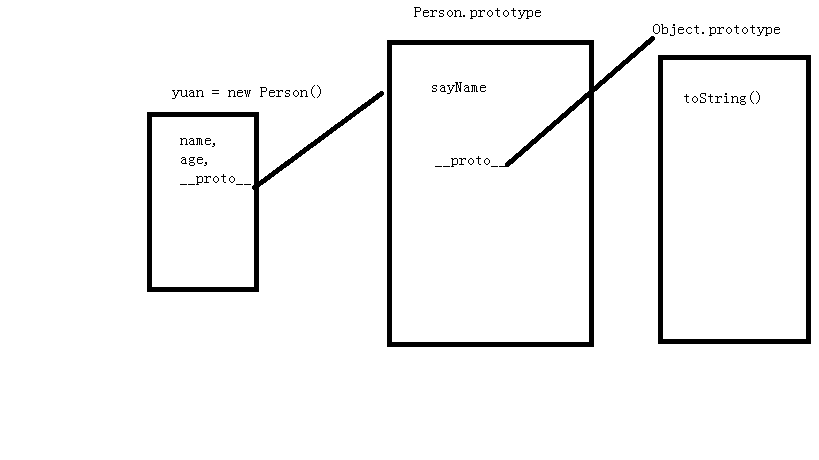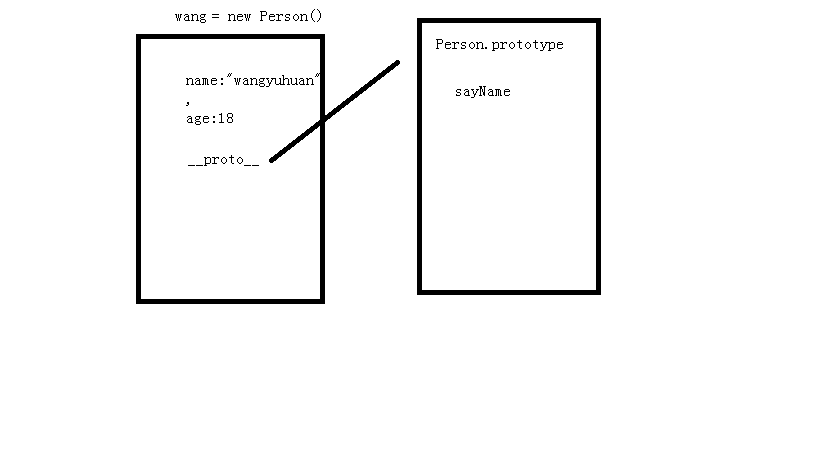1.原型链
JavaScript规定,所有对象都有自己的原型对象(prototype)。一方面,任何一个对象,都可以充当其他对象的原型
<script>/* 为什么一个实例化的对象能够使用它原型上的方法 */function Person(name,age){this.name = name;this.age = age;}Person.prototype.sayName = function(){console.log(this.name)}/*1.每个对象都有一个隐藏属性__proto__,它指向它的原型对象2.这个对象会享有原型上的属性或者方法*/var wang = new Person("wangyuhuan",18)console.log(wang)// wang.sayName = function(){// console.log("wang")// }// wang.sayName()console.log(wang.__proto__) //里面有sayname()console.log(wang.__proto__==Person.prototype) //true</script>
2.继承
<script>// function Person(name,age){// this.name = name;// this.age = age;// }// Person.prototype.sayName = function(){// this.name;// }class Person{constructor(name,age){this.name= name;this.age = age}sayName(){console.log(this.name)}}/* 使用extends关键可以实现继承,之后自动拥有父类的属性和方法 */class Student extends Person{constructor(name,age,skill){super(name,age);this.skill = skill}saySkill(){console.log(this.skill)}}var cheng = new Person("chengchao",18);/* 父类不能使用子类的方法 */cheng.saySkill()var s = new Student("lisi",17,'js')// s.sayName()console.log(s.__proto__) //Person</script>
<script>/*1. class实现一个类2. constructor关键字实现构造函数3.类中的方法是写在原型上的4.extends关键字能够实现继承5.在子类的方法中去调用父类的方法使用this就可以调用*//*1.es5构造函数--实现了类2.new关键字实例化了对象3.原型4.原型链*/class Person{ //Person类constructor(name,age){this.name= name;this.age = age} //构造函数sayName(){console.log(this.name) //构造函数方法} //写在原型对象上}/* 在子类的方法中去调用父类的方法 */class Student extends Person{constructor(name,age,skill){super(name,age);this.skill = skill}saySkill(){this.sayName()}}var cheng = new Student("lisi",12,'js');cheng.saySkill()var p = new Person("zhangsan",18)console.log(Person.prototype) //有sayName</script>



